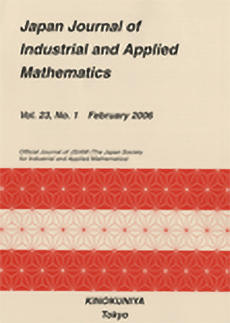Abstract
Let an $n\times n$ matrix $A$ of floating-point numbers in some format be given. Denote the relative rounding error unit of the given format by $\mathtt{eps}$. Assume $A$ to be extremely ill-conditioned, that is $\cond(A)\gg\mathtt{eps}^{-1}$. In about 1984 I developed an algorithm to calculate an approximate inverse of $A$ solely using the given floating-point format. The key is a multiplicative correction rather than a Newton-type additive correction. I did not publish it because of lack of analysis. Recently, in [9] a modification of the algorithm was analyzed. The present paper has two purposes. The first is to present reasoning how and why the original algorithm works. The second is to discuss a quite unexpected feature of floating-point computations, namely, that an approximate inverse of an extraordinary ill-conditioned matrix still contains a lot of useful information. We will demonstrate this by inverting a matrix with condition number beyond $10^{300}$ solely using double precision. This is a workout of the invited talk at the SCAN meeting 2006 in Duisburg.
Citation
Siegfried M. Rump. "Inversion of Extremely Ill-Conditioned Matrices in Floating-Point." Japan J. Indust. Appl. Math. 26 (2-3) 249 - 277, October 2009.
Information




